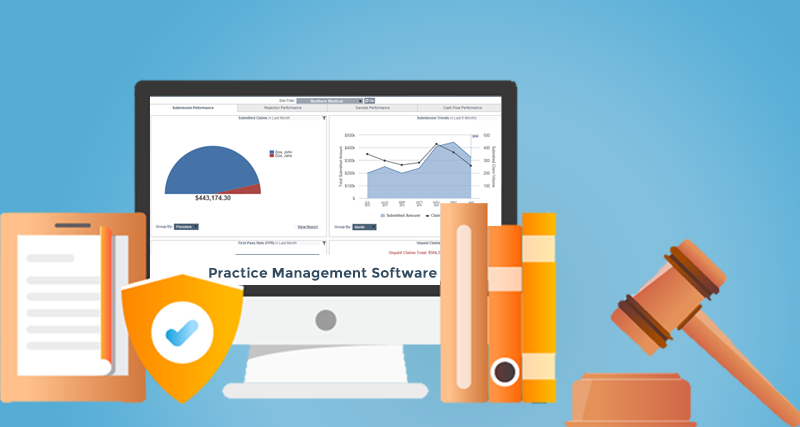In an increasingly competitive legal landscape, law firms are continuously seeking ways to enhance efficiency and improve client service. One of the most significant advancements in this quest is the Legal Case Tracking System. These systems not only streamline case management but also promise a substantial return on investment (ROI). This article will delve into how law practices can evaluate the ROI of implementing a legal case tracking system, the benefits it offers, and the key metrics to consider.
Understanding ROI in the Legal Context
Return on investment (ROI) is a financial metric that evaluates the profitability of an investment relative to its cost. In the context of a law firm, ROI can be assessed not only in monetary terms but also through improvements in efficiency, client satisfaction, and overall productivity.
Key Components of ROI
- Cost Savings: This includes reductions in administrative expenses, overtime, and resource allocation.
- Revenue Generation: Improved case management can lead to higher case resolution rates and increased client retention.
- Time Efficiency: Saving time on case management translates into more billable hours for attorneys.
- Client Satisfaction: Enhanced communication and transparency can lead to better client relationships, resulting in referrals and repeat business.
The Benefits of a Legal Case Tracking System
A Legal Case Tracking System offers numerous benefits that can significantly impact a law firm’s ROI. Here are some of the key advantages:
1. Improved Efficiency
One of the most immediate advantages of a legal case tracking system is the improvement in operational efficiency. By automating routine tasks such as document management and scheduling, attorneys can focus more on substantive legal work rather than administrative duties. This shift not only enhances productivity but also allows for better allocation of resources.
2. Enhanced Client Communication
With a legal case tracking system, clients receive real-time updates about their cases. This transparency reduces the volume of inquiries attorneys receive, allowing them to allocate more time to casework. Satisfied clients are more likely to refer others, thereby increasing the firm’s client base and revenue.
3. Better Case Management
A legal case tracking system centralizes all case-related information, making it easier for attorneys to access documents, notes, and deadlines. This organization minimizes the risk of errors and missed deadlines, which can be costly both financially and reputationally.
4. Increased Billable Hours
By streamlining case management processes, attorneys can increase their billable hours. When legal professionals can spend less time on administrative tasks, they can focus more on client work, thus maximizing their earning potential.
5. Data-Driven Decision Making
Most legal case tracking systems come equipped with analytics capabilities. Firms can analyze case outcomes, attorney performance, and client engagement metrics. This data empowers firms to make informed decisions about case strategies and resource allocation, ultimately improving performance and profitability.
Evaluating the ROI of a Legal Case Tracking System
To effectively evaluate the ROI of a legal case tracking system, law firms should consider the following steps:
1. Determine Initial Costs
The first step in assessing ROI is calculating the initial costs of implementing a legal case tracking system. This includes software licensing fees, hardware requirements, training expenses, and any additional resources needed for implementation.
2. Estimate Ongoing Costs
Beyond initial costs, firms should also consider ongoing expenses, such as subscription fees, maintenance costs, and any future upgrades. Understanding both initial and ongoing costs is crucial for a comprehensive ROI analysis.
3. Identify Potential Savings
Next, firms should identify areas where they expect to see cost savings. This might include reduced administrative time, lower overtime expenses, and decreased paper and printing costs. Estimating these savings will help firms understand how quickly they can recoup their investment.
4. Calculate Revenue Increases
Consider how the legal case tracking system could lead to increased revenues. This could be through higher client retention rates, increased case resolution rates, or the ability to take on more cases due to improved efficiency. Estimating potential revenue increases is essential for understanding the total ROI.
5. Assess Time Savings
Time is a valuable resource in the legal profession. By evaluating how much time attorneys can save through improved case management, firms can calculate the financial impact of those saved hours. If attorneys can bill more hours due to increased efficiency, this will directly contribute to revenue growth.
6. Measure Client Satisfaction
Client satisfaction is a more qualitative metric but equally important. Law firms can gather feedback through surveys or client interviews to gauge satisfaction levels before and after implementing the legal case tracking system. Improved client satisfaction can lead to increased referrals and long-term client loyalty, impacting revenue positively.
7. Monitor Performance Metrics
After implementation, firms should continuously monitor performance metrics to evaluate the system’s effectiveness. Key metrics may include:
- Average time taken to resolve cases
- Client retention rates
- Number of inquiries received from clients
- Billable hours per attorney
By tracking these metrics, firms can assess whether the legal case tracking system is meeting its intended goals.
Case Studies: Success Stories in ROI
Several law firms have successfully implemented legal case tracking systems and experienced significant ROI. Here are a few illustrative case studies:
Case Study 1: Greenfield Law Group
Greenfield Law Group, a small firm specializing in family law, implemented a legal case tracking system to improve client communication and case management. After six months, they reported a 25% increase in client satisfaction scores. Additionally, the firm saw a 15% rise in billable hours, translating to a revenue increase of approximately $150,000 annually. The initial investment was recouped within the first year.
Case Study 2: Thompson & Associates
Thompson & Associates, a larger law firm, faced challenges with managing a high volume of cases. By adopting a legal case tracking system, they streamlined their workflow, resulting in a 40% reduction in administrative tasks. This efficiency allowed attorneys to take on an additional 10 cases per month, leading to a revenue boost of $300,000 annually. The firm realized a positive ROI within 18 months of implementation.
Conclusion
Evaluating the ROI of a Legal Case Tracking System is essential for law firms looking to enhance efficiency, improve client satisfaction, and ultimately boost profitability. By assessing initial and ongoing costs, identifying potential savings and revenue increases, and continuously monitoring performance metrics, firms can make informed decisions about the value of these systems.
The investment in a legal case tracking system is not merely a technological upgrade; it is a strategic move towards achieving long-term success in a competitive legal market. Firms that embrace this technology will likely find themselves better positioned to meet client expectations and achieve sustainable growth.












